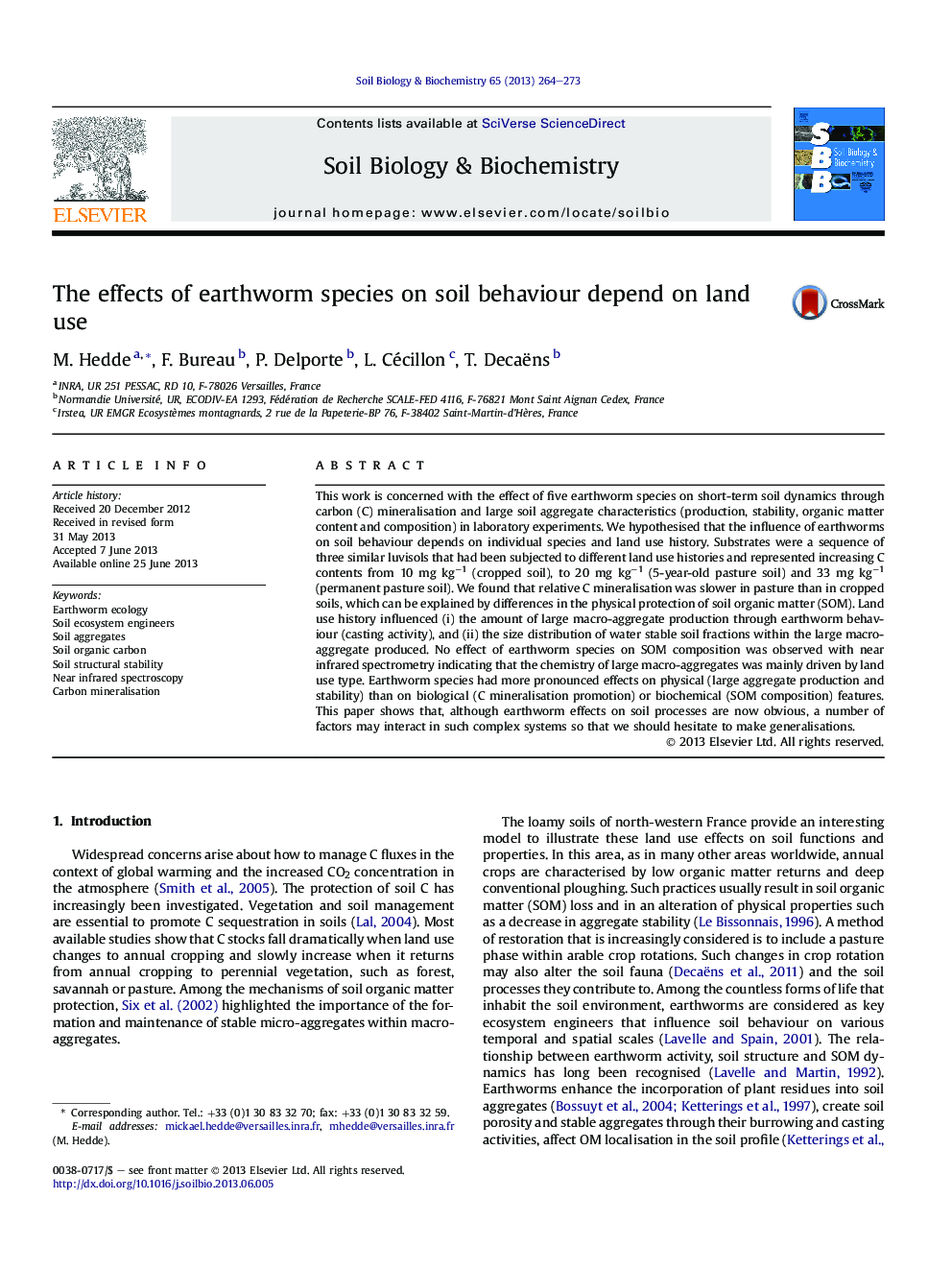| Article ID | Journal | Published Year | Pages | File Type |
|---|---|---|---|---|
| 8365222 | Soil Biology and Biochemistry | 2013 | 10 Pages |
Abstract
This work is concerned with the effect of five earthworm species on short-term soil dynamics through carbon (C) mineralisation and large soil aggregate characteristics (production, stability, organic matter content and composition) in laboratory experiments. We hypothesised that the influence of earthworms on soil behaviour depends on individual species and land use history. Substrates were a sequence of three similar luvisols that had been subjected to different land use histories and represented increasing C contents from 10 mg kgâ1 (cropped soil), to 20 mg kgâ1 (5-year-old pasture soil) and 33 mg kgâ1 (permanent pasture soil). We found that relative C mineralisation was slower in pasture than in cropped soils, which can be explained by differences in the physical protection of soil organic matter (SOM). Land use history influenced (i) the amount of large macro-aggregate production through earthworm behaviour (casting activity), and (ii) the size distribution of water stable soil fractions within the large macro-aggregate produced. No effect of earthworm species on SOM composition was observed with near infrared spectrometry indicating that the chemistry of large macro-aggregates was mainly driven by land use type. Earthworm species had more pronounced effects on physical (large aggregate production and stability) than on biological (C mineralisation promotion) or biochemical (SOM composition) features. This paper shows that, although earthworm effects on soil processes are now obvious, a number of factors may interact in such complex systems so that we should hesitate to make generalisations.
Keywords
Related Topics
Life Sciences
Agricultural and Biological Sciences
Soil Science
Authors
M. Hedde, F. Bureau, P. Delporte, L. Cécillon, T. Decaëns,
